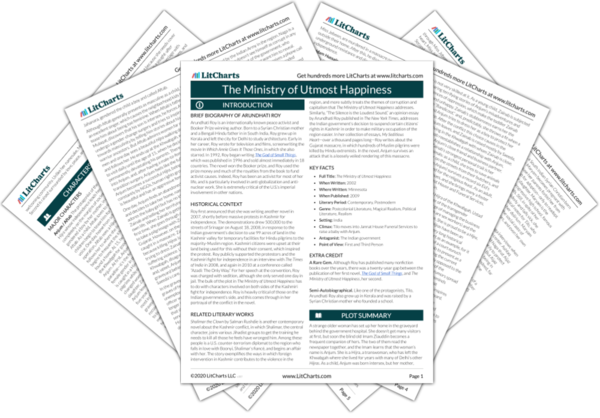In the novel, the color saffron represents the violence of conservative, Hindu extremist political parties. This is a loosely veiled reference to the political party of India’s current prime minister, Narendra Modi, who has pushed a neo-fascist Hindu nationalist agenda, erasing religious minorities from public school history books and turning the other cheek to lynch mobs that terrorize Muslim and lower-caste communities. Modi supporters often wear the color saffron, which is a special color in the Hindu religion, in protests. In the novel, when Anjum is involved in a massacre of Muslim pilgrims to Gujarat, Roy refers to the attackers as “saffron parakeets with steel talons and bloodied beaks, all squawking together.” While saffron is a sacred color for the Hindu extremist groups, in the novel it appears only to symbolize religious violence, or the trauma that Anjum experiences as a survivor of religious violence.








